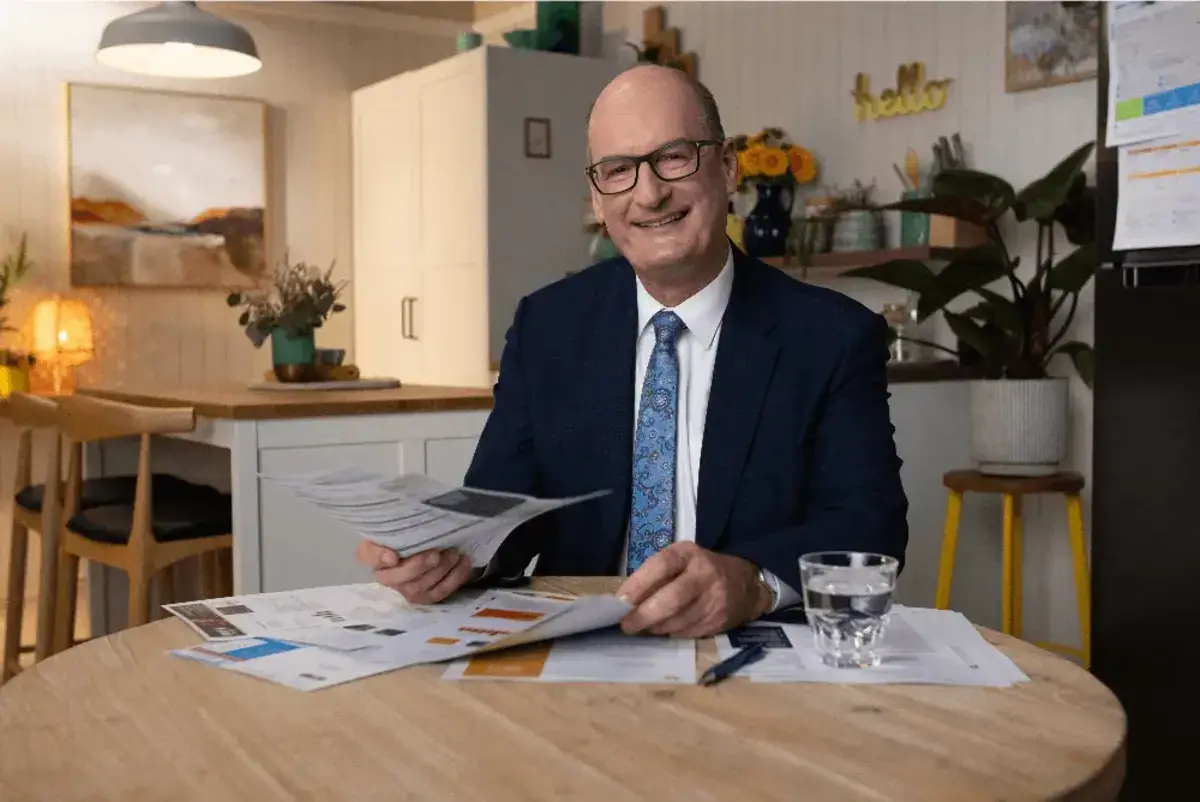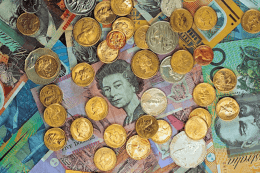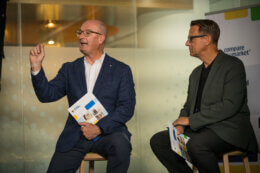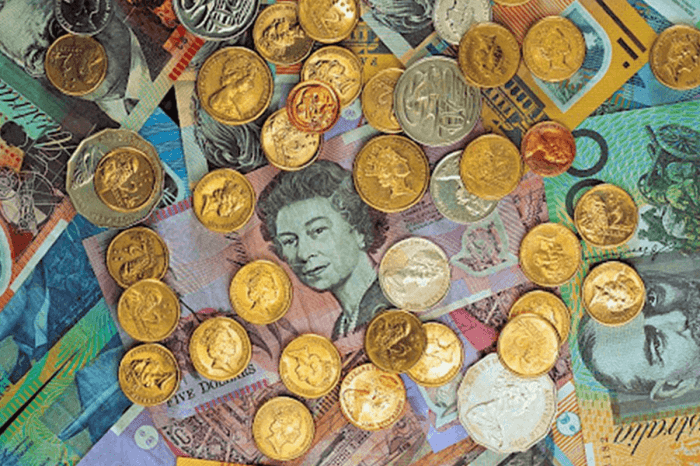
Hi everyone,
A bit of a catch up after a big week in finance:
• The latest inflation figures… sticky is the word for it.
• RBA Board minutes show we’re likely at the peak of the cycle.
• Aussies may be cash strapped but they’re still among the wealthiest in the world.
• The two-speed property market still looking strong.
• Property potential – house vs home unit.
• Chocolate could be melting a hole in our wallets.
Why the property squeeze will not be easing anytime soon
I have a pretty comprehensive property update coming up shortly but the shortage of new houses is not going to be rectified anytime soon.
The number of Aussie building approvals fell 1.9 per cent in February… and down 5.8 per cent on a year ago. Apartments drove the bulk of the decline in the month. Volatile private sector dwellings excluding houses approved fell by 24.9 per cent but private sector houses rose 10.7 per cent.
Council consents for higher density dwellings, such as apartments, fell to the lowest level in 12 years in February.
In the year to February 2024, there were only 163,099 approvals to build new homes. Around the lowest annual total in almost 11 years, and well below the Federal Government’s 240,000 annual target established under the National Housing Accord.
The slower building activity will be ahead of a fall-off in demand for architects, builders and building material suppliers.
Inflation comes in at a better than expected 3.4 per cent a year
Speaking of the ABS, its latest CPI figure for February came in unchanged from the previous month at 3.4 per cent for the year, which was still slightly under the 3.8 per cent predicted by a lot of economists.
Rising housing costs were again the main contributor to inflation. The pace of rental price growth picked up, rising by 0.8 per cent in February to be 7.6 per cent higher (double inflation), over the year. Take out rental assistance and the actual rent increase is a whopping 9.3 per cent.
It’s worth pointing out here that more than 700,000 overseas students are living in Australia, the highest figure on record. Figures out this week show there were 713,000 people on student visas in Australia in February, 50,000 more than the previous record of 664,100 last September.
And all of them need somewhere to stay.
It’s not just rents driving inflation but also the cost of new homes which rose 0.3 per cent for February and 4.9 per cent for the year. The silver lining is the annual 5 per cent rise in costs looks to be stabilising despite the ongoing rise in materials and labour costs.
Together with rents, these two housing categories contributed just under half of the monthly increase in consumer prices. The weights for these two categories are around 14 per cent of the total CPI basket.
Electricity prices actually fell by 0.6 per cent over February. The government’s Energy Bill Relief Fund continues to push down out of pocket costs for electricity. These rebates mean that electricity bills are around 15 per cent lower than otherwise. The unwinding of these rebates are occurring later than anticipated.
While the price of goods has been consistently slowing, price growth of services has been strong and that has been the worry for the RBA. But there are some good signs here as well.
Inflation for restaurant meals and takeaway both eased to 0.5 per cent with the annual rate falling from 5.6 to 5.3 per cent. Other household services inflation declined further to just 2.3 per cent for the year… a long way down from its peak of 9.9 per cent.
Aussies tightening their spending belt… except for the Swifties
As I admitted earlier, I did spend up for the Taylor Swift tour but it seems I wasn’t alone. The music superstar even received a special mention by the Australian Bureau of Statistics when reporting on the latest retail sales figures.
“Seven sold out Taylor Swift concerts in Sydney and Melbourne boosted retail spending this month, with over 600,000 Swifties flocking to these events. This led to increased spending on clothing, merchandise, accessories and dining out.”
The official figures showed a 0.3 per cent rise in retail spending in February but take the so-called “Taylor Swift effect” out of the figures and spending only edged up 0.1 per cent. Yes, the economic impact of Taylor Swift was huge.
If you also take into account the high levels of migration, then it’s clear Aussies are not spending much at the shops.
And if allowance is made for the high levels of migration, clearly retail spending is going nowhere at present.
In February the largest gains in spending were in the categories of clothing & footwear (+4.2 per cent) and department stores (+2.3 per cent) because of Swifties. Cafes, restaurants & takeaway also saw an impact, rising by 0.5 per cent but household goods were down ( 0.8 per cent), as was retailing ( 0.4 per cent) and food retailing ( 0.1 per cent).
Cash may be tight but wealth is still rising
The old saying about being “cash poor and asset rich” has never been more relevant. High inflation and the sharpest rise in interest rates for a generation has really squeezed household budgets.
But while it’s tough to make ends meet on a day-to-day basis, the overall wealth of Australians continues to rise.
Australian household wealth has hit an all-time high, rising for the fifth straight quarter, with property, cash and share assets all hitting record-high levels in December 2023, thanks to direct ownership of shares as markets surge and the impact of rising property values.
Last week’s ABS Household Wealth Data shows household:
• Net wealth sat at a record $15.66 trillion in the December 2023 quarter.
• Wealth was boosted by a record level of property assets of $10.66 trillion.
• Direct shareholdings hit a record $1.40 trillion.
• Held a record $1.70 trillion in cash and deposits.
• Held a record $3.74 trillion in superannuation.
All of these assets are at record-high levels.
The ABS data showed that ownership of shares surged over the December quarter, with households’ direct ownership of equities rising 3.8 per cent or by $51.8 billion to $1.40 trillion. House prices continued to grow significantly, as did domestic and overseas share markets, despite higher rates.
Property values up again in March
CoreLogic’s national Home Value Index (HVI) rose 0.6 per cent in March – the same increase as the month before and the 14th straight month of growth.
Since declining 7.5 per cent between April 2022 and January 2023, the national HVI has increased 10.2 per cent, or, in dollar terms, by approximately $71,832, rising to new record highs each month since November last year.
Every capital city except Darwin (-0.2 per cent) recorded a rise in dwelling values over the month.
Perth’s housing market was the fastest growing where values were up 1.9 per cent over the month, followed by Adelaide and Brisbane with 1.4 per cent and 1.1 per cent growth respectively.
The remaining capitals are showing much lower rates of change, although Melbourne is the only capital city to record a negative quarterly movement, down 0.2 per cent over the first three months of the year.
Although housing values are rising faster than at the end of last year, the quarterly trend of growth has halved relative to the middle of last year when home values were rising 3.3 per cent quarter-on-quarter.
As I’ve often pointed out, low building levels and high migration is creating a property squeeze. For example, last month’s ABS population data showed net overseas migration to WA was running well above average at 18,122 in the September quarter of last year (up from a decade average of 4,639 per quarter), a trend seen in most states.
Interesting to see Brisbane’s median value streaking ahead of Melbourne… and Adelaide will overtake Melbourne at this rate pretty soon.

Property values: Houses vs home units
Standard investment advice is to always buy a house instead of an apartment if you can afford to do so. The primary reason being that house price growth always exceeds unit price growth over the long term.
According to Ray White Chief Economist, Nerida Conisbee, while this is often the case, it doesn’t always hold true. For example, an apartment in one suburb may outperform a house in another. Less common, however, is unit price growth within a suburb outperforming houses in the same suburb.
Over the past 12 months, unit price growth in Brisbane and Adelaide has exceeded house price growth. Part of the reason for this is a combination of underbuilding and population growth. Whereas Sydney and Melbourne went into the pandemic with a strong pipeline of new development, this wasn’t the case elsewhere. Brisbane specifically has seen very strong population growth since then. Adelaide has also seen similar growth.

The suburbs with the biggest gaps in house and unit price growth are relatively diverse geographically and relatively expensive. The impact of the development of better quality apartments becomes more apparent at this level.
Ivanhoe, for example, in Melbourne’s north-east is an expensive suburb that has seen a lot of new apartments built over recent years. The apartments being built are bigger and higher quality than the older style apartments that existed.
A surprising chart that’s caught my attention
As you know I love a good chart. I reckon a picture (or chart) can tell a thousand words.
A couple of weeks ago I was warning you chocoholics to buy up big before the skyrocketing price of cocoa was passed on to consumers. Have a look at this. A tonne of cocoa is now worth more than a tonne of copper for the first time ever.
That is incredible.








